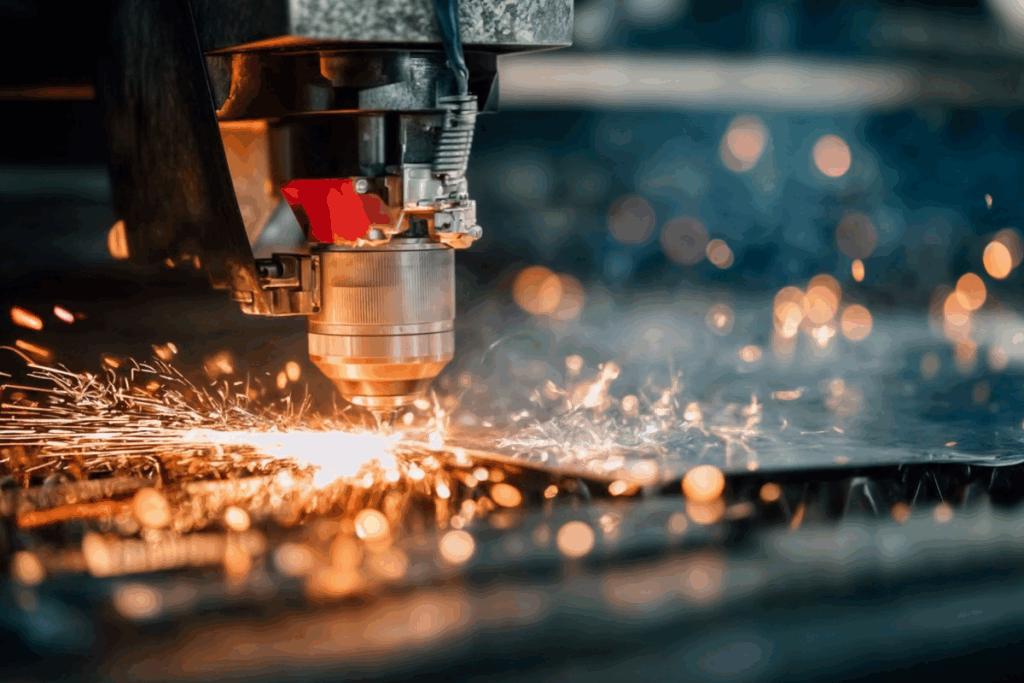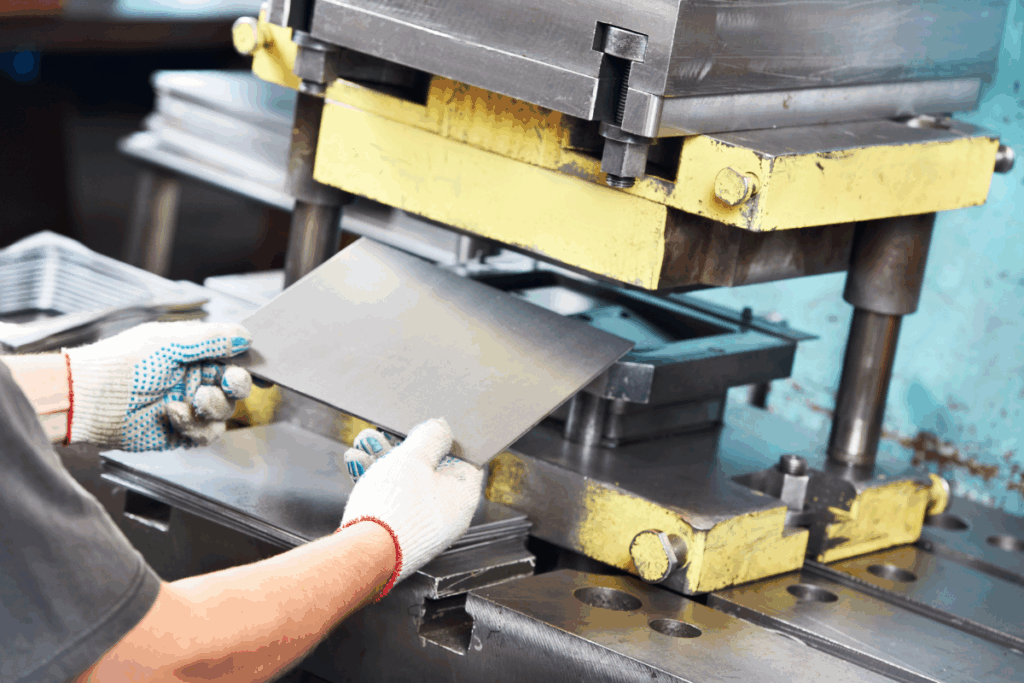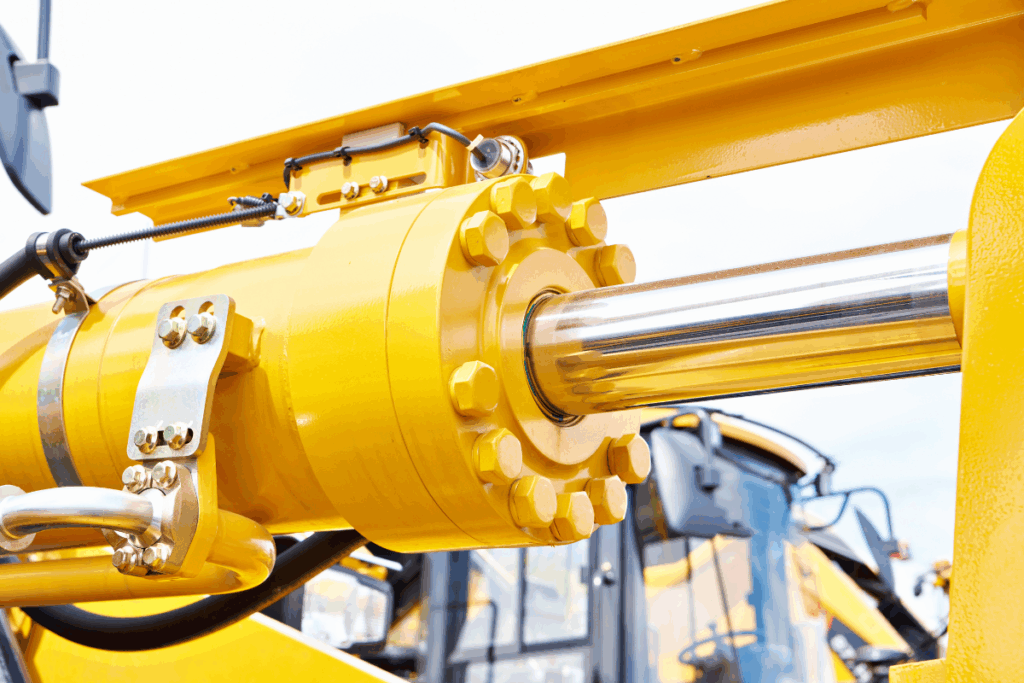Metalworking has long been associated with new technology that helps keep our industry moving forward and in lockstep with consumer demand. Innovations such as CNC machining and waterjet cutting tools have revolutionized productivity on the production floor, but the introduction of robotics is transforming metal fabrication like nothing before it.
That’s because the advancement of robots allows companies like ours to expand their capabilities, optimize their processes to achieve greater efficiency, and deliver quality products to customers sooner, giving them a competitive edge in an ever-tightening marketplace.
Welding And Fabrication Processes That Use Robotics
Fabricators have been adopting robot technology to work alongside humans in several aspects of the metalworking process. Their assistance to people is invaluable, as they take on largely repetitive tasks for large production runs, allowing humans to carry out the more detailed custom work that robots cannot do.
Robots support humans in disciplines such as arc welding, laser welding, and metal cutting and shaping. Because instructions are relayed to them using CNC technology, the robots work with a high degree of accuracy, even with complex geometries, ensuring reliable repeatability for small and mass-produced products.
They can also be used for loading and unloading heavy parts and components.
The Benefits Of Using Robotics In Modern Machining And Fabrication Facilities
One key benefit of robotic systems is the increase in productivity. Welding systems can run continuously without fatigue or the need for a break, increasing throughput and allowing fabricators to get their products to customers sooner. They also complete tasks faster and with greater efficiency, completing welds in a fraction of the time a human worker can and with consistent accuracy and quality.
Another contribution robot technology makes to our industry is enhancing worker safety. Robots take on dangerous tasks, shielding workers from risks such as extreme heat, toxic fumes, arc radiation, and potential injuries from handling heavy materials or machinery. By minimizing workplace mishaps, robots keep production on schedule.
Robots also support a company’s sustainability objectives and lower operating costs by optimizing material usage, reducing waste, and improving energy efficiency.
Where Human Workers Will Always Be Needed
Although robotics provide a host of cost-effective benefits to manufacturers, there’s still a stigma surrounding their widespread adoption. This is mainly driven by fears that robots will entirely replace human workers on the production floor. This is not the case at all, as fabrication companies use robots to help humans do their jobs better. In other words, they’re in place to assist people, not replace them,
We’ll always need human workers to serve in many functions that robots simply cannot, such as:
Leadership And Decision-Making
Robots cannot lead. They are programmed to carry out a specific function and are unable to make decisions independently. Humans, however, can use their reasoning skills to make strategic decisions and reprogram robots in alignment with the new direction.
Customized Work
Every metal fabrication project is unique, requiring different bends and cuts to achieve the desired results. While robots are highly capable of carrying out repetitive tasks with precision, customized work is best left in human hands.
Creative skills
Robots lack the human ability to be creative. Many designs require inspired, out-of-the-box thinking that can almost be considered an art form. Only humans can develop intricate designs that solve customer problems with thoughtfulness and originality.
Adaptability
Robots are regimented and cannot be flexible when faced with a problem. They rely on humans to update their programming when changes to a task need to be made. We still need people to direct the robots and ensure that only the highest-quality work is delivered.
In some circles, talk of robots replacing humans has given way to discussions about how artificial intelligence (AI) might one day take over duties we need people to do today. At this time, AI isn’t nearly sophisticated enough to replace human workers, but, much like robots, it helps humans do their work more efficiently. For example, AI systems can create rudimentary drawings for parts designers to build upon or provide predictive analytics based on data to alert workers when a welding or fabrication tool needs to be serviced or replaced.
Despite what Hollywood tells us, we can’t foresee a day when robots fully replace human workers. At AC Fabrication & Assembly Solutions, we’ll continue to embrace transformative technology while maintaining our long-standing tradition of putting people first.
Read More: The Benefits Of Using A One-Stop Fabrication Supplier
AC Fabrication And Assembly Solutions: Your Only Stop For End-To-End Off-Road Agriculture And Construction Equipment Solutions
AC Fabrication and Assembly Solutions is the only machined and fabricated parts and components supplier in the world that can fulfill your project requirements from initial design to final delivery.
With 300 years of combined experience under our belts, we offer quality, durability, and service you won’t find with any other supplier, delivered by skilled technicians whose primary goal is to create sustainable growth for our customers.
Contact an AC Fabrication and Assembly Solutions expert at 204-952-1900 or by email at sales@acfabandassembly.com for a custom quote on your next project today!



